The butterfly life cycle the Montessori way is the best method of learning it. Montessori education emphasizes the importance of hands-on learning and self-discovery, which are crucial for young learners in developing a deep understanding of language and science.
By integrating subjects such as language arts with science, Montessori teachers and parents can foster an environment where children are not only learning the mechanics of writing but also engaging with the world around them. This holistic approach ensures that children are better prepared for future academic challenges.
Incorporating science into language arts allows children to apply their language skills to real-world situations. By engaging with topics like the butterfly life cycle, children gain insight into natural processes while honing their handwriting abilities. This dual approach to learning helps solidify knowledge by connecting it to tangible experiences, making education both enjoyable and effective for young Montessori students.
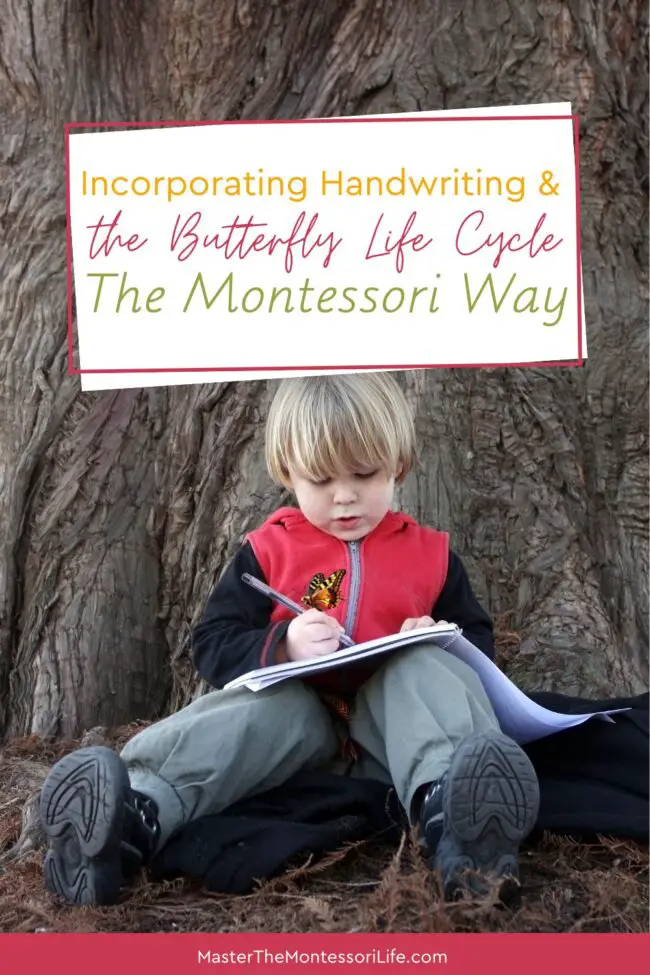
Understanding the Butterfly Life Cycle
The butterfly life cycle is a fascinating process that captivates the imagination of children and adults alike. It consists of four distinct stages—egg, caterpillar, chrysalis, and butterfly—each offering unique opportunities for observation and learning. Educators can leverage this natural wonder to teach children about growth, transformation, and adaptation in the natural world.
The Egg Stage
In the first stage, the female butterfly lays eggs on the leaves of host plants. This stage can teach children about the importance of plant selection and how specific plants support the life cycles of different species. Through activities like drawing or describing the eggs and their surroundings, children can practice their descriptive writing skills and learn about the interconnectedness of ecosystems.
The Caterpillar Stage
Once the eggs hatch, tiny caterpillars emerge. This stage provides an excellent opportunity to discuss concepts such as growth and nutrition, as caterpillars must eat voraciously to support their rapid development. Children can engage in handwriting exercises by tracing and labeling parts of the caterpillar and writing short narratives about the caterpillar’s daily life, fostering creativity and literacy skills.
The Chrysalis Stage
The transformation from caterpillar to chrysalis is a period of intense change and preparation. During this stage, children can learn about metamorphosis and the physiological changes that occur. Writing exercises might include crafting simple explanations of metamorphosis or creating a timeline of the life cycle, reinforcing the use of sequential language and logical thinking.
The Butterfly Stage
Finally, the emergence of the butterfly marks the culmination of the life cycle. This stage can spark discussions about beauty, diversity, and biodiversity. Children can create poetry or narrative stories about the butterfly’s first flight or its role in pollination, helping them connect scientific concepts with expressive language arts.
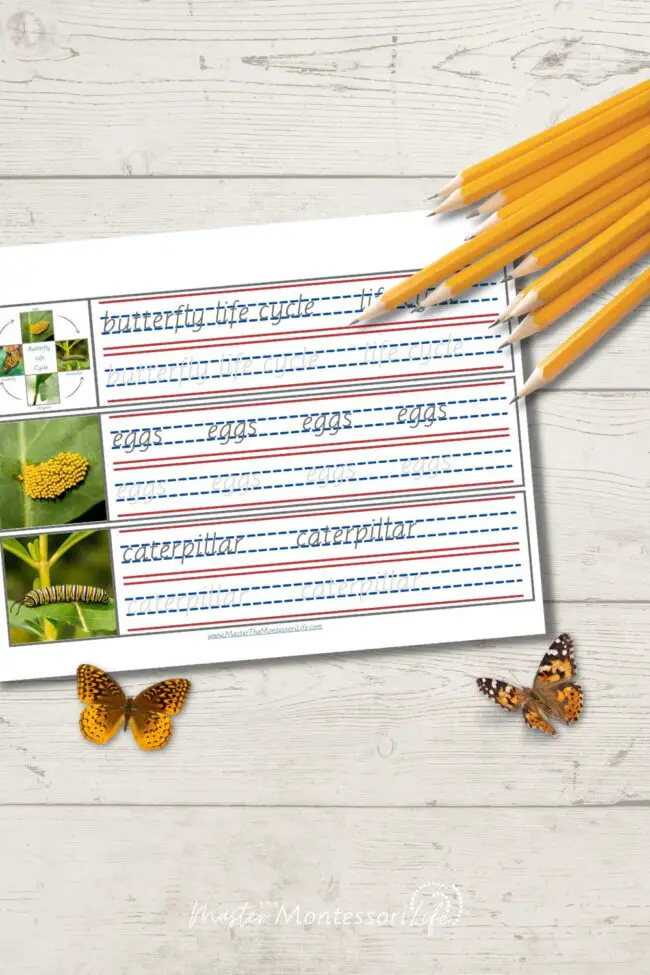
Handwriting the Montessori Way
Handwriting practice in the Montessori classroom is about more than just forming letters correctly. It’s an opportunity to connect fine motor skills with cognitive development in meaningful ways. Using the Montessori method, children can develop their handwriting skills in a natural and supportive environment.
The Montessori Approach to Handwriting
The Montessori method encourages children to learn at their own pace, using hands-on materials that foster independence and curiosity. In the context of handwriting, students often use specially designed materials, such as sandpaper letters and tracing sheets, that engage tactile learning. This multisensory approach helps children internalize letter shapes and movements, promoting better retention and skill development.
Integrating Handwriting with Science
By incorporating the butterfly life cycle into handwriting practice, children can engage with both language arts and science simultaneously. This approach not only reinforces handwriting skills but also deepens understanding of the scientific concepts being explored. Children can trace letters and words related to the butterfly life cycle and write sentences or short paragraphs describing each stage, integrating vocabulary and scientific knowledge with language arts practice.
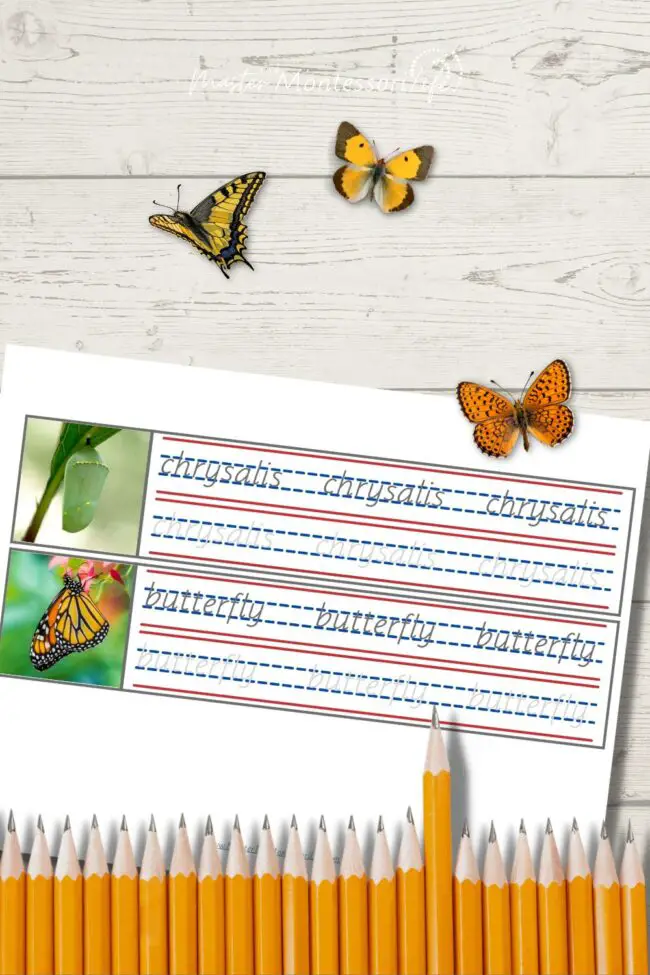
Conclusion
Integrating language arts with science through the study of the butterfly life cycle offers a dynamic and enriching educational experience for Montessori students. By combining these disciplines, educators can nurture children’s natural curiosity and foster a lifelong love of learning.
To support this educational approach, consider the Butterfly Life Cycle Manuscript Handwriting Practice + Lesson Plan. This resource offers a comprehensive set of handwriting pages and lesson plans designed to engage your child in manuscript handwriting practice while exploring the fascinating world of butterflies. It’s a fantastic way to integrate Montessori science and language arts in one activity, ensuring that your child remains engaged and inspired throughout.
Explore the Butterfly Life Cycle Manuscript Handwriting Practice + Lesson Plan and begin your child’s educational adventure today!
You might also enjoy these relevant topics:
How to Teach the Butterfly Life Cycle with Printable Dice
Montessori Life Cycle of a Butterfly 3-Part Cards
Montessori Life Cycle of a Butterfly
The Easiest Way to Teach Children about the Butterfly Life Cycle
Montessori Science Life Cycles
- 8 Easy Montessori Culture Activities
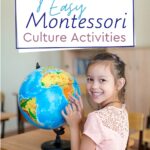 In this post, let’s discuss 8 easy ways in which you can incorporate Montessori Culture activities for young children.
In this post, let’s discuss 8 easy ways in which you can incorporate Montessori Culture activities for young children. - Mastering Montessori at Home: Why Planning is Key
 Spread the love Montessori education is renowned for its child-centric approach, fostering independence, creativity, and a lifelong love for learning. If you’re a parent or educator looking to implement Montessori principles at home, you’re embarking on a rewarding, yet sometimes challenging, journey. To ensure success, planning plays a crucial role.…
Spread the love Montessori education is renowned for its child-centric approach, fostering independence, creativity, and a lifelong love for learning. If you’re a parent or educator looking to implement Montessori principles at home, you’re embarking on a rewarding, yet sometimes challenging, journey. To ensure success, planning plays a crucial role.… - The Power of Primer Papers: Enhancing Speech and Language in Montessori Education
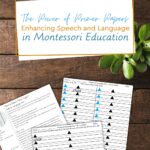 Spread the loveIn the nurturing and individualized environment of Montessori education, language development is a core focus, crucial for a child’s holistic growth. Montessori language arts offer unique tools that aid in this integral aspect of learning, with primer papers standing out for their effectiveness. In this blog post, we’ll…
Spread the loveIn the nurturing and individualized environment of Montessori education, language development is a core focus, crucial for a child’s holistic growth. Montessori language arts offer unique tools that aid in this integral aspect of learning, with primer papers standing out for their effectiveness. In this blog post, we’ll…






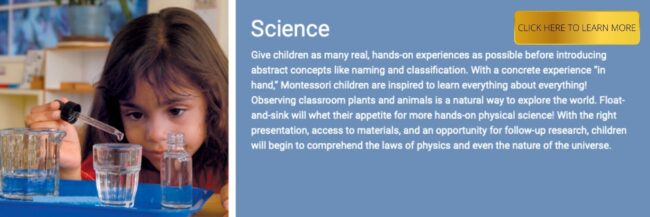
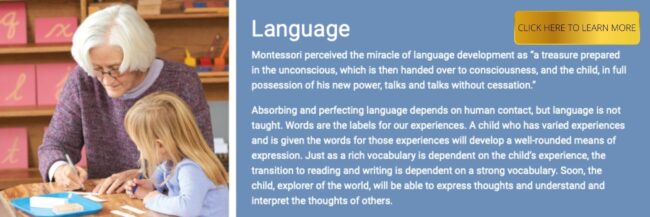

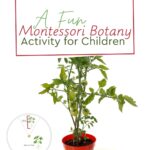
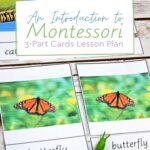
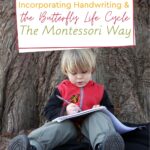
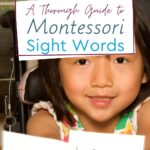
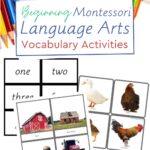
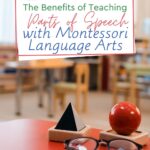
Leave a Reply